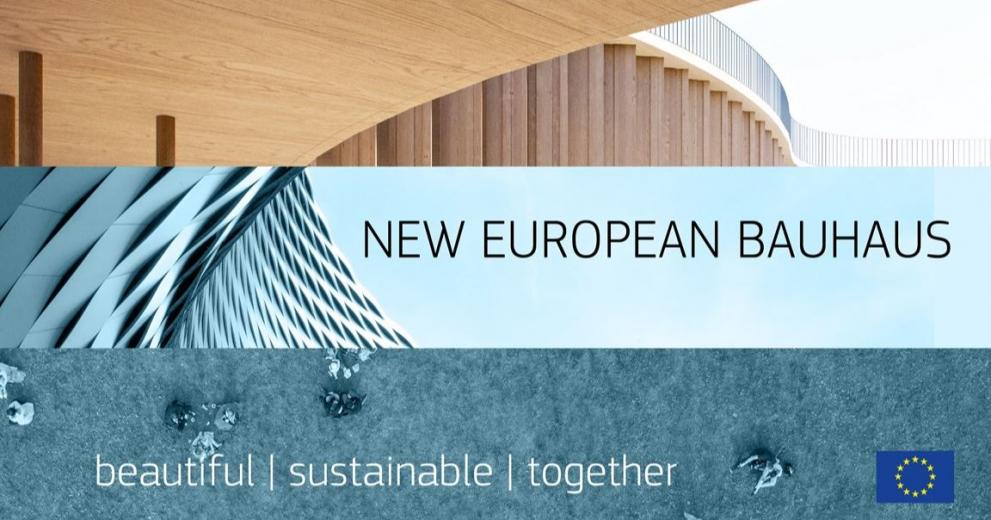
The Commission has adopted a Communication setting out the concept of the New European Bauhaus, as it moves from design to delivery.
The adoption was followed by a ceremony to announce the winners of the first New European Bauhaus Prizes.
From a floating wild garden in the heart of Barcelona to a ‘zero waste’ house in Slovenia, the winning projects show beautiful, sustainable and inclusive solutions that will inspire the New European Bauhaus, as it moves from co-design to delivery.
Out of 60 shortlisted projects, prizes were awarded in 10 different categories, from 'techniques, materials and processes for construction and design' to 'mobilisation of culture, arts and communities'.
The winners of the 'New European Bauhaus Awards' in each category received €30,000, as well as a communication package to spread the word about their projects across Europe and beyond.
For the 'New European Bauhaus Rising Stars', open to under-30s, 10 prizes of €15,000 and a communication package were awarded in the same 10 categories.
The ceremony took place just one day after the adoption of a Commission Communication on the New European Bauhaus, with several policy actions and funding possibilities to drive the initiative forward. For the funding, there will be about €85 million dedicated to New European Bauhaus projects from EU programmes in 2021-2022.
On top of the €85 million dedicated to the first calls for pilot projects, many EU programmes will integrate the New European Bauhaus as an element of context or priority, without a predefined dedicated budget.
The aim is to accelerate the transformation of various economic sectors, such as construction and textiles, providing access to all citizens to goods that are circular, affordable and less carbon intensive.
In so doing, the initiative will help translate the European Green Deal into tangible change on the ground that improves our daily life, in buildings, in public spaces, but also in fashion or furniture.
As Commission President von der Leyen said during her State of the Union address last week: "if the European Green Deal has a soul, then it is the New European Bauhaus!"
Fostering a growing movement
During the co-design phase of the initiative, the Commission received more than 2,000 contributions from all over Europe and beyond. The actions in the Communication take inspiration from this input, as well as from the inspiring examples highlighted by all the prize entries.
The Communication also sets out the plan to establish a New European Bauhaus Lab: a 'think and do tank' to co-create, prototype and test new tools, solutions and policy recommendations.
The lab will continue the movement's collaborative spirit that brings together different walks of life and reaches out to society, industry and politics to connect people and find new ways of creating together.
The JRC brought its multidisciplinary expertise and creativity in leading the co-design of the project together with the Commission's IDEA advisory service.
Many other Commission departments, over 200 official partners from all EU countries, and a high-level roundtable of 18 experts including designers, innovators, activists and academics were also key in making a success of this first phase and helping to turn it into a solid plan of actions.
Inspired by the views and experiences of thousands of EU citizens and organisations who joined the co-design of the New European Bauhaus from January to June 2021, four thematic axes will now guide its implementation:
- Reconnecting with nature;
- Regaining a sense of belonging;
- Prioritising the places and people that need it most;
- Fostering long term, life cycle and integrated thinking in the industrial ecosystem.
Funding
Funding for the actions set out in the Communication will come from different EU programmes including Horizon Europe (notably the Horizon Europe missions), LIFE programme and the European Regional Development Fund.
In addition, the Commission will invite EU Member States to use the New European Bauhaus core values (sustainability, aesthetics and inclusion) and principles (multi-level, participatory and transdisciplinary) in their local strategies.
They will also be invited to mobilise the relevant parts of their recovery and resilience plans, as well as the programmes under cohesion policy, to build a better future for everyone.
New European Bauhaus and the European Commission
The Commission has also started integrating New European Bauhaus values in its own building strategy.
In Brussels, colleagues working on the renovation of the Commission Visitors' Centre will follow these values in their architectural and communications project.
The values will also guide new construction and refurbishment projects proposed by the Commission for the JRC's sites in Seville and Geel.
Related Content
New European Bauhaus: Delivery
Questions and Answers - New European Bauhaus Communication
Sign up to the New European Bauhaus newsletter
Details
- Publication date
- 24 September 2021
